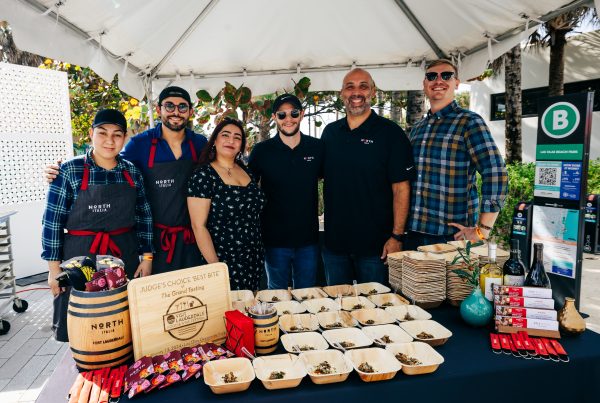From its strategic location in the greater Miami area, the National Hurricane Center (NHC) has functioned as the nation’s chief source of information on Atlantic storms since its formation in 1949. Now operating on the campus of Florida International University, and under the auspices of the National Oceanic and Atmospheric Administration (NOAA), the NHC endeavors “to be America’s calm, clear and trusted voice in the eye of the storm and, with its partners, enable communities to be safe from tropical weather threats.”
Its analysts crunch the numbers in granular detail as part of six task forces, from the Hurricane Specialist Unit to the Technology and Science Branch, and it’s their data on which meteorologists throughout Florida and the east coast rely when the next named storm barrels toward their town.
The tip of this spear is Michael J. Brennan, director of the NHC since 2023 and a 15-year veteran of NOAA. Boca spoke to Brennan about this year’s Atlantic hurricane season and what South Floridians need to know.
ON THE ROLE THE NHC PLAYS IN SHAPING GOVERNMENT ACTIONS
We have a huge role through our Storm Surge Unit of identifying where the storm surge risk is in Florida, amongst other states. That’s really important, because that’s what generally drives the creation of evacuation zones and policies that are enacted by state and local government levels across the country.
And then when you shift into more of a real-time event, the Hurricane Center is making the forecast for the hurricane’s entire life cycle, all the way from before something even forms, through our Tropical Weather Outlook, all the way through the development stage and maturity and even beyond, to the point where something isn’t a tropical cyclone anymore. … So the Hurricane Center’s role is key in making that big-picture forecast and setting that national message.
ON THE 2024 ATLANTIC HURRICANE SEASON FORECAST
There will be hurricanes. We can say that pretty confidently. Indications are that we’ll be heading into a La Niña phase of the cycle in the Pacific, which tends to favor more active Atlantic hurricane seasons.
But the message for your readers is that we have to be ready every year, regardless of what any seasonal forecast says. You have to go back to Hurricane Andrew in 1992, an otherwise relatively quiet hurricane season, and we had a Category Five hurricane hit South Florida. And in particular, Florida is at risk throughout the hurricane season, from June through November. We had a hurricane make landfall in November in 2022. For parts of South Florida, the most likely time to be hit is when we get into that October timeframe.
Floridians in particular have to also be ready for these short-fuse hurricane events, where storms can develop and make landfall within two or three days. And we’ve seen many examples of that over the last few years.
ON EDUCATION AND FIGHTING COMPLACENCY
For Florida in general, we have a lot of people moving here constantly from areas that aren’t hurricane-prone. And we have this constant education and re-education effort—a re-education effort for the long-term population that may not have seen big impacts in a while, and an initial education effort for the new population that’s moving in all the time.
ON THE CHANGING WAYS WE CONSUME OUR STORM NEWS
Communication and information is everywhere, but simultaneously, it’s hard to know where people are getting their information. I like to think about Hurricane Andrew. The forecasts were not nearly as good as they are now. But at that time, everybody got their information basically from local television, from the same small group of people that were largely saying the same thing. So everybody was on the same page.
Now the hurricane forecasts and the hazard information and all the products and services we provide are tremendously better and more widespread. … But the information landscape has splintered into a million pieces, and so people are getting information from all sorts of places that may or may not be the most reliable or credible sources.
Follow the Hurricane Center on social media. Go to hurricanes.gov. Find your local National Weather Service office at weather.gov. Find your local government emergency management officials, your county emergency management agency, your trusted media sources, those broadcast meteorologists that you watch all the time. Know those sources now, so that you can filter out the noise when it inevitably comes.
For more insights from NHC Director Michael J. Brennan, check out this exclusive Web Extra from the July/August 2024 issue of Boca magazine.







